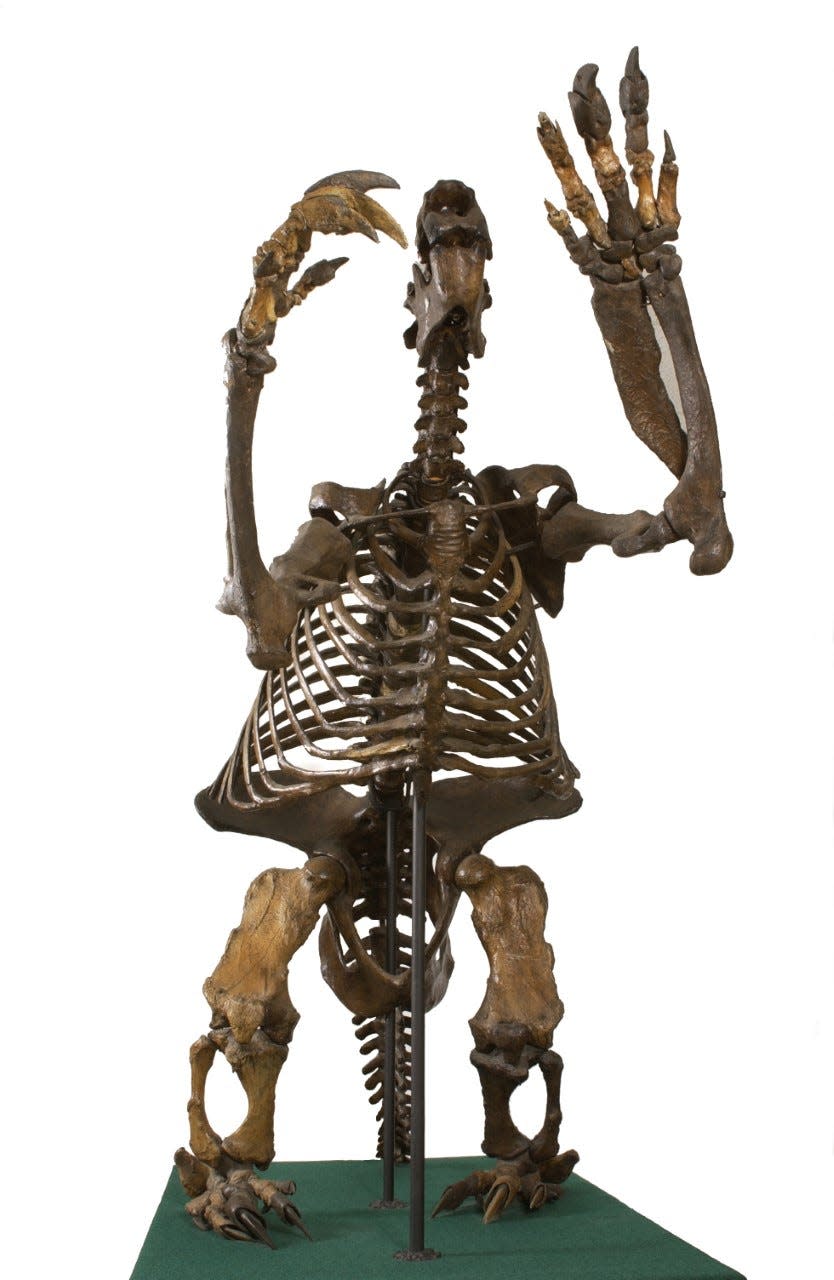Giant lumbering ground sloth inhabited much of North America in Ice Age | Geology

Entering Ohio State University’s Orton Geological Museum, you are confronted with an imposing skeleton. Standing 7 feet tall on its hind legs, its outstretched arms end in long, sharp claws.
It is a skeleton of Megalonyx jeffersonii, a giant ground sloth, one of four now-extinct species of ground sloth that inhabited North America during the Ice Age. In life it would have weighed about 2,400 pounds, average for the species.
Megalonyx means “great claw”, a name bestowed by Thomas Jefferson, whose 1799 scientific article on some bones from Virginia (now West Virginia) marks the beginning of the science of paleontology in America. The species name jeffersonii was given later, in Jefferson’s honor.

Since then, remains of Megalonyx have been found at more than 180 sites in North America, from the east to the west coast and from Alaska to central Mexico. The species appeared around 300,000 years ago and became extinct around 11,000 years ago, so it lived through multiple advances and retreats of the glaciers.
Recent analysis of a site in southwestern Iowa, the Tarkio site, has provided some fascinating new insights on the species. The site is unique in having three individuals preserved together. What is even better, they are from an adult, a subadult and a youngster.
The animals were alive around 106,000 years ago, during an interglacial, a time when the glaciers had retreated far to the north and the climate was similar to what it is there today. Pollen and other plant fossils indicate the area they lived in was along a stream in an open woodland forest, with marshy areas nearby.
The animals most likely died and were buried together, not washed together by chance. The only other bones found at the site were shell fragments of a soft-shelled turtle, a snapping turtle and a pond turtle. The bones were exposed for a while before becoming buried, as shown by the weathering, a few rodent gnaw marks, and crushing due to trampling.
About half the bones of the adult skeleton were present. It is one of the largest individuals known for the species, with an estimated weight of 2,830 pounds. The subadult, represented by about 25% of the skeleton, is half the adult size. The juvenile, represented only by both shoulder blades, was about 30% the size of the adult.
In general, body size in mammals correlates well with lifespan, gestation, birth interval and age at sexual maturity. Given those values, the lifespan of Megalonyx was probably around 19 years, gestation time 14 months, and sexual maturation occurred at around 6.5 years. Given those estimates, the youngster may have been around three years old and the subadult was around 6.
In mammals, the males are usually larger, but not always. In some marine mammals, some primates, some large carnivores, and in tree sloths, the females are larger. The large size of the Tarkio adult might indicate it was a female. Among modern sloths the female is the sole caregiver of youngsters, and large size would have been an advantage in fending off predators. The three skeletons might thus represent a family unit of a mother and two of her offspring.
Dale Gnidovec is curator of the Orton Geological Museum at Ohio State University. Contact him at gnidovec.1@osu.edu
This article originally appeared on The Columbus Dispatch: Giant ground sloth common in North America during Ice Age

